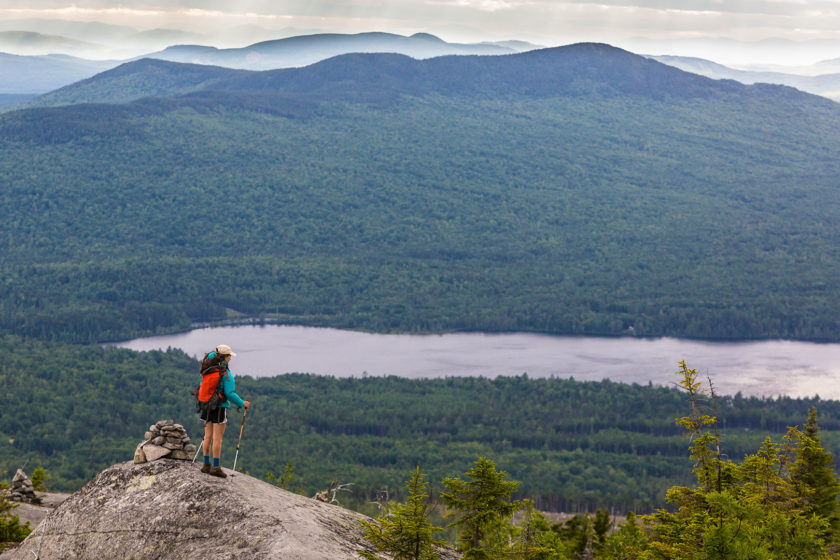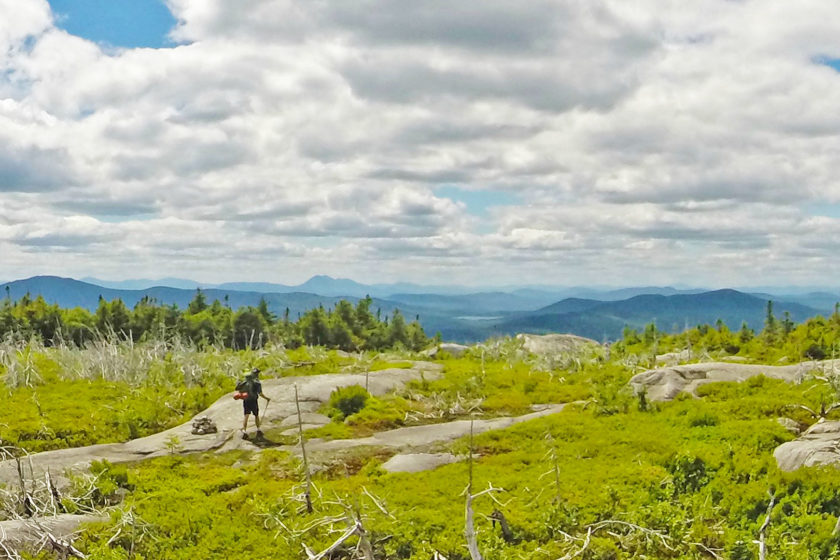By Anne Sentz, ATC Landscape Partnership Manager
Preserving Maine’s Iconic A.T. Views
December 4, 2019
A collaborative land acquisition at Bald Mountain Pond will help preserve some of the Appalachian Trail’s most rugged landscapes.
If you’re looking for an example of collaborative, landscape-scale conservation, focus your attention on the northernmost state in New England: Maine. Wild, rugged and beautiful, Maine is well-known by Appalachian Trail (A.T.) enthusiasts because it is home to Katahdin, the northern terminus of the Trail. Yet the magic of Maine extends beyond Katahdin, and the dramatic landscape that the A.T. traverses from the New Hampshire border to Baxter State Park is full of pristine lakes, forested ridges, significant wildlife and endless outdoor recreation opportunities.
Unfortunately, the beauty of this area makes it vulnerable, which is why a strong coalition of partners dedicated to the protection of these lands and waters is so important.
Bald Mountain Pond is one of those conservation projects that continues to be successful because of collaborative partnerships. Decades in the making, the protection of Bald Mountain Pond and its surrounding lands saw a major success this year when the Trust for Public Land (TPL) conveyed 1,495 acres along the ridge of Moxie Bald Mountain, a bald summit with 360-degree views, to the National Park Service (NPS). The acreage is now an official addition to the Appalachian National Scenic Trail, resulting in the protection of a landscape meant to remain wild.
To give you an idea of the prominence of what has been protected, this acreage includes a century-old forest that has never been logged; it is also an area of Statewide Ecological Significance home to black bear, arctic char and moose; and thanks to a right-of-way acquired by NPS, a previously private road system will be accessible to those wishing to recreate in these woods.
What does all this mean for A.T. enthusiasts? It means this part of the Trail is guaranteed to remain forever wild, ensuring humans and ecological communities benefit from the natural and scenic values in this beautiful part of Maine.
The conveyance of this tract of land to NPS also allows for greater public access, meaning outdoor recreationists can contribute to local, recreation-driven economies — something that is incredibly important in a state where commercial timberland is so vital to the economy.
The Appalachian Trail Conservancy is proud to work alongside all partners involved in this effort. As stewards of the A.T., we have the enormous responsibility of protecting and managing this 2,190-mile footpath, but we certainly do not accomplish that mission on our own. In addition to TPL, other organizations like The Conservation Alliance, the Maine Appalachian Trail Land Trust, Maine Department of Inland Fisheries & Wildlife, the National Park Foundation, the National Park Service and the National Park Trust have and continue to provide support for this project, which is just one example of collaborative conservation working to protect the A.T. experience we know and love.
Lead image courtesy of the Trust for Public Land/Jerry and Marcy Monkman/EcoPhotography. All other photos courtesy of Maine Appalachian Trail Land Trust.








